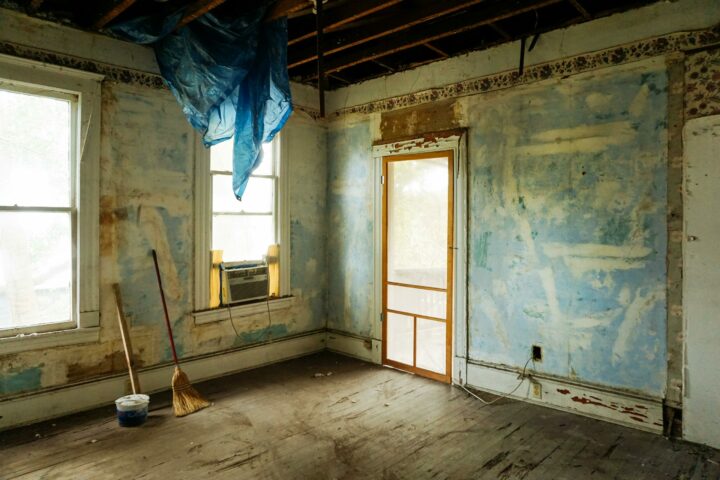The following contribution is from another author.
Is your old house giving you plumbing problems?
Living in a classic Las Vegas home with its unyielding charm is undoubtedly appealing. However, these homes often come with their own set of challenges, particularly when it comes to plumbing. With the desert climate and the age of many houses, plumbing issues can become a frequent headache.
In this blog, we will explore the most common plumbing problems that plague older homes and offer practical tips to help you deal with these challenges.
Outdated Plumbing Materials
Many older homes still feature plumbing systems made from materials that are now considered substandard or hazardous. For instance, lead pipes were commonly used up until the late 20th century but are now known to pose severe health risks. Similarly, polybutylene pipes, popular in the mid-20th century, are prone to breakage. Homeowners should consider updating these materials to modern standards to improve safety and functionality. Replacing old pipes provides a safer water supply and increases the home’s value.
Leaky Faucets and Fixtures
Leaky faucets are not only annoying but can also lead to significant water wastage and increased utility bills. In older homes, the wear and tear on faucet components such as washers and gaskets often cause these leaks. Fortunately, many of these issues can be fixed easily with basic tools and replacement parts available at most hardware stores. Homeowners should regularly check their faucets for drips and leaks, tightening connections and replacing worn-out parts as necessary. If the problem persists or if you’re unsure of how to proceed, it might be wise to look up emergency plumbers in Las Vegas who can offer professional assistance and prevent further damage.
Corroded Pipes
One of the most prevalent issues in older homes is pipe corrosion. Over time, pipes made from metal, such as iron or copper, can deteriorate due to oxidation and the constant flow of minerals through the water. This corrosion can lead to leaks, restricted water flow, and even contaminate the water supply. Homeowners can look for signs of discoloration, staining, or an unusual taste in their water as indicators of corrosion. To combat this, it’s advisable to have a professional plumber assess the extent of corrosion and consider replacing old pipes with modern materials like PVC or PEX, which are resistant to corrosion.
Low Water Pressure
Low water pressure in older homes can be frustrating and may be caused by a variety of factors, including corroded pipes, leakages, or even improperly sized piping. To diagnose and resolve low water pressure, first identify whether the issue is isolated to one area or widespread throughout the home. Simple fixes might include cleaning out aerators on faucets or showerheads, while more significant issues like pipe replacement might require professional intervention.
Slow Drains
Slow drains are commonly found in older homes and can be attributed to years of buildup inside the piping. This can include anything from hair and soap scum in bathroom drains to grease and food particles in kitchen sinks. Homeowners can often alleviate slow drains with regular maintenance, using natural cleaners like baking soda and vinegar to break down clogs without damaging old pipes. For more stubborn blockages, a plumber’s snake or a professional drain cleaning service may be necessary.
Sewer Line Issues
Sewer line problems are particularly troublesome in older homes, where the sewer pipes may be made of clay or other porous materials that attract tree roots. These roots can invade the pipes, causing blockages or even significant damage through cracks and breaks. Additionally, older sewer lines are prone to sagging due to shifts in the ground over time. Homeowners should watch for signs like frequent backups, gurgling sounds from toilets, and unexplained lush patches in the yard. A professional plumber can conduct a camera inspection to determine the condition of the sewer lines and recommend either repairs or a complete replacement if necessary.
Faulty Water Heater
Water heaters in older homes can be less efficient and prone to issues such as sediment build-up, rust, and corrosion, which can impact both water quality and heating efficiency. If the water heater is over a decade old, it might be time to consider replacing it with a newer, more efficient model. Regular maintenance such as flushing the tank annually and checking the anode rod can help prolong the life of the water heater, but eventually, an upgrade will likely be necessary for reliable performance.
Inadequate Venting
Proper venting is important for maintaining the efficiency and safety of plumbing systems. Older homes may have venting systems that no longer meet current codes or have been compromised over time due to shifting structures or deterioration. Inadequate venting can lead to slow drains and hazardous sewer gas buildup inside the home. Updating the venting system can improve the functionality of the plumbing system and make the home safer and more comfortable.
Toilet Problems
Toilets in older homes are often less efficient and more prone to problems like clogs, leaks, and constant running. These issues are not only a nuisance but can also waste a significant amount of water. Homeowners might consider replacing old toilets with new, high-efficiency models that use less water and reduce the likelihood of clogs and leaks. Regular checks for faulty flappers and fill valves can also prevent running toilets and help conserve water.
Insufficient Plumbing Upgrades
While piecemeal repairs can address immediate plumbing issues, older homes often benefit from more comprehensive upgrades. These upgrades can ascertain that the plumbing system operates efficiently and meets modern safety and efficiency standards. Regular evaluations by a plumbing professional can help homeowners plan for upgrades that keep pace with the latest technology and materials, avoiding repetitive repairs and emergency situations.
All in all, older homes, with their age and history, come with their own set of plumbing challenges. From the wear and tear of aging pipes to outdated fixtures and potential hazards like lead, it’s clear that maintaining a well-functioning plumbing system in these houses requires extra care and attention. By understanding the common issues and taking proactive steps, homeowners can prevent costly repairs and maintain their home’s value, and enjoy peace of mind. Remember, regular inspections, prompt repairs, and modern upgrades can transform potential plumbing headaches into hassle-free living.
















